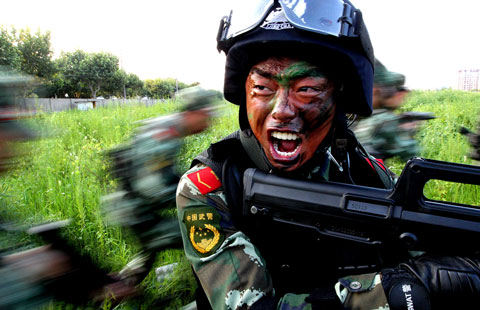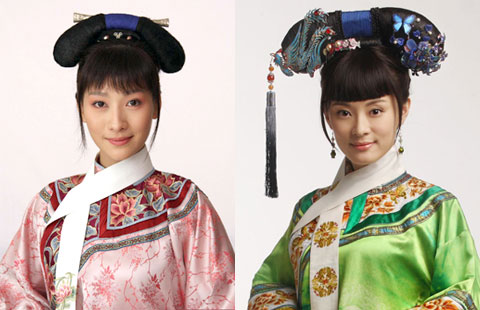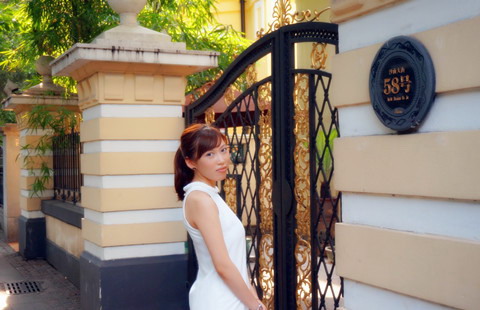
Diaries shed lights on massacre, Yang Yang reports in Nanjing
In 1995, Iris Chang, a US historian and journalist, decided to write a book about the Nanjing Massacre, in which at least 300,000 Chinese civilians and unarmed soldiers were killed by invading Japanese troops during a six-week period starting in December 1937. To better understand the massacre, she turned to Shao Ziping in New York.
Shao, born in Nanjing in 1936, is the son of a Nationalist government diplomat to Yokohama and is the founder of the Chinese Alliance for Memorial and Justice and the Alliance in Memories of Victims of the Nanking Massacre. He has worked for decades to raise awareness of the slaughter, which took place when the city was known as Nanking.
"I told Iris about German businessman John Rabe and that I was looking for manuscripts that might contain a lot of historical material about the massacre. I asked her to join me. But I thought that because I can speak German, I was much more likely to find the diaries before her," Shao recalled.
"But Iris was an investigative reporter, good at looking for things. She sent 100 e-mails to different people and got two or three replies. One of them was from Rabe's granddaughter, Ursula Reinhardt, who had the diaries."
In 1996, a media briefing was held in New York to publicize the discovery. Seven months later, the 2,100-plus pages that Rabe wrote from 1937 to early 1938 were translated into Chinese and published in China.
According to Shao, Chang delayed the publication of her book, The Rape of Nanking, for three months because she needed to add material culled from the diaries.
Besides Rabe's diaries, for the preparation of her book, Chang also read in the library of Yale Divinity School the diaries of Minnie Vautrin, a US missionary and teacher in Nanjing, which also contain precious materail about the massacre.
Rabe's and Vautrin's diaries are now among the most important source materials about the event. Along with other material recorded by Nanjing-based expats who chose to stay in the city, the diaries not only confirm the atrocities committed by Japanese soldiers and officials from a third-party perspective, but also reveal a humanitarian history about the authors' selfless help to the Chinese people.
Japanese troops captured Nanjing, which was the capital of China at the time, on Dec 13, 1937. Within three weeks, unsupervised soldiers and military officials had turned on the city and killed huge numbers of unarmed civilians and soldiers in a variety of brutal ways - including being buried or burned alive, decapitation, bayoneting, and shooting.
Rape and murder
Survivor Ding Zhenglan, 85, recalled: "I could see bodies everywhere on the streets. The most hideous places were the bomb shelters. They (the Japanese soldiers) knew people hid in them during air raids and shot them with machine guns. The bodies were piled high".
Ding said she would never forget the screams of a 12-year-old local girl who was raped by Japanese soldiers. The Tokyo War Crimes Tribunal estimated that 20,000 women and girls were raped during the first month of the occupation. To cover their crimes, the soldiers usually killed their victims.
"Many elderly women in their 60s and 70s who did not want to leave their homes were killed after being raped," said 90-year-old Jin Hongying.
When they related their memories, the elderly women were visibly agitated. They asked: Why doesn't the Japanese government admit the historical facts? "Facts are facts. We were there and we saw it all," Ding said.
For Yang Shanyou, 48, director of Nanjing University John Rabe International Safety Zone and Memorial Hall, acknowledging history is a crucial activity. "The present and the future will eventually become history. If a certain historical period is a blank for a country, it means it has no future."
Because they escaped to a safety zone in the nick of time, Ding, Jin and their families escaped death. Ding's family took refuge at No 3, Shanghai Road, while Jin's family stayed at Nanking Bible Training School in Dajiangyin Alley.
To protect Jin's 16-year-old sister-in-law from the soldiers who raided the school for girls, their mother dressed the young woman like an old lady, smeared ash on her face and sent her to Ginling Women's College, which was under Vautrin's protection.
In late November 1937, foreseeing the looming disaster for local civilians, 15 expats from the United States, the United Kingdom, Germany and Denmark set up an International Committee and a safety zone. The 3.86-square-kilometer zone consisted of 25 locations that provided food and shelter for around 250,000 refugees, but it came to an end in February 1938, when Rabe was sent back to Germany.
The grateful refugees idolized expats such as Rabe and Vautrin. "Without Miss Vautrin, it's unimaginable how many young women would have been ruined by the Japanese soldiers," Jin said.
It's estimated that Ginling Women's College, which primarily offered shelter to young women and their children, received about 15,000 refugees. With so many young women gathered together, the place quickly became a target. The middle-aged Vautrin was often threatened by bayonet-wielding soldiers who demanded huaguniang, or "beautiful girls".
Vautrin worked from early morning to late at night to get enough food for the refugees, many of whom had narrowly escaped death and were penniless. She tried to arrange lessons to help the women learn skills and crafts that would help them to make a living after the war. Sometimes, despite her efforts, she was unable to prevent Japanese soldiers from raping women in the college and carrying them away.
On Dec 24, 1937, Vautrin .wrote in her diary that she had allowed some Japanese soldiers to take away 21 prostitutes because they promised that once they got them they would leave the other women alone.
Eventually, Vautrin suffered a nervous breakdown and returned to the US for treatment in May 1940 after 28 years in China. A year later, she killed herself at her home in Illinois. Her tombstone was engraved four characters meaning "Forever Ginling" in memory of her contribution to Nanjing and its people.
Irrefutable evidence
Rabe was the chairman of the International Committee. Because Germany was Japan's ally during World War II, his records of the massacre have immense credibility.
In his diaries, Rabe kept detailed notes about the brutality of the Japanese soldiers, his protests to senior Japanese military officials, and his letters to Adolf Hitler, in which he detailed the atrocities and asked for help.
"With Vautrin and Rabe's diaries, the evidence of the crimes committed by the Japanese army is irrefutable," Yang Shanyou said, adding that Rabe was a great man and very popular in China, but few people in Germany have heard of him, partly because he was a Nazi. However, Rabe was irreplaceable, Yang said.
Rabe's position as a Nazi gave him an advantage as chairman of the International Committee. Japanese soldiers would stop and back away when he pointed at the swastika he wore on his arm. None of the 622 refugees under his protection was hurt or killed.
"He loved China and the Chinese people, he expressed that clearly in his diaries. He lived in China for 30 years and it was his second home. He's the (Oskar) Schindler of China. Of course, he also worried about his own safety. He had diabetes and had to take insulin every day. He had the chance to leave Nanjing, but he asked himself in his diary what would happen to the people in the safety zone once he left," Yang said.
In 1937 and 1938, Western media, including Reuters, The Associated Press and the New York Times, published more than 40 reports about the massacre. From January to May 1938, Life magazine in the US published 10 photos of the wounded and the dead, but didn't reveal the name of the photographer.
Silent movie
Fifty-three years later, David Magee received Shao Ziping at his house in New York. After months of searching, Shao had found a way of contacting Magee, the second son of John Magee, a US missionary to China and the chairman of the Nanking Committee of the International Red Cross Organization. The photos published in Life were stills from a 37-minute film that the elder Magee had shot with a 16-millimeter camera.
Because the Japanese had imposed a ban on photos or filming in the street, Magee was unable to catch any scenes of slaughter, but he did capture footage showing severely injured locals being treated at a number of hospitals.
He also filmed the seven deaths in Xia Shuqin's family. Only two of the nine family members survived - Xia Shuqin, then aged 8, and her younger sister. Rabe noted the case in his diaries.
In 1998, Xia's credibility was questioned by two right-wing Japanese scholars. In 2000, she sued the authors for defamation, using Rabe's diaries and Magee's film as evidence. In 2008, Japan's Supreme Court ruled in Xia's favor and she received compensation of more than 315,000 yuan ($50,600).
The silent movie, edited with explanations of each take, was especially effective in the case because John Magee had attended the Tokyo War Crimes Tribunal as a witness of the crimes committed in Nanjing.
For several decades, China and Japan have debated the Nanjing Massacre: about whether it really happened or was a propaganda exercise, about the death toll, about whether local Nationalist soldiers disguised themselves as civilians and killed Japanese soldiers, about whether it was a slaughter of the helpless.
An archive of material - A Collection of Historical Materials Relating to the Nanjing Massacre - now consists of 72 books. "Of course, there are related archives in many countries, so researchers can continue to investigate and uncover new facts. But, what we really need to do is tell the world about the massacre," Yang Shanyou said.
Zhang Lianhong, a researcher at the Nanking Massacre Research Center at Nanjing Normal University, said: "We didn't have much material before Rabe and Vautrin's diaries were found and published, and those debates were generally on a political level instead of an academic one."
"With this evidence, instead of continuing a childish debate about the scale of the massacre, which makes little sense, what we need to do now is to reflect on what happened, why it happened, and find out what the world thinks about it," he said.
Bringing history back to life
In May 2013, Jenny Chan established the Foundation Honoring Nanjing Massacre Survivors, a project sponsored by San Francisco's largest art space, Intersection for the Arts. Through the arts and theater, the foundation tries to encourage dialogue about the "Forgotten Asian Holocaust", and provide an accurate version of events. Last year, the foundation performed a play about Minnie Vautrin called Forever Ginling.
In early March, Chan, 22, visited Nanjing to see the present-day city and Ginling Women's College, which later became part of Nanjing Normal University. Through her work on the US missionary Minnie Vautrin and the Nanjing Massacre, Chan has also met with researchers in the field.
She became interested in Vautrin because "she is perhaps one of the bravest women I have read about". Chan, a US-born Chinese, said she never heard about the War of Resistance Against Japanese Aggression (1937-45) in school.
"It is rare to find a Westerner who knows about the war (of resistance). In the US, we study the Jewish Holocaust extensively, but we don't spend any time on the Nanjing Massacre or the war," she wrote in an e-mail exchange with China Daily.
"My grandmother told me about some personal encounters during the war, but it never crossed my mind as being anything serious," Chan said, and "after I read The Rape of Nanking by Iris Chang, I understood what my grandparents were trying to communicate to me. I started the organization to communicate the message of the war because I do not want people to forget such a horrific event."
At the end of March, the foundation will present a new show The Crimes of Hirohito: A Grand Jury Trial in San Francisco, featuring the characters of Minnie Vautrin and Iris Chang.
- Yang Yang
Contact the author atyangyangs@chinadaily.com.cn








